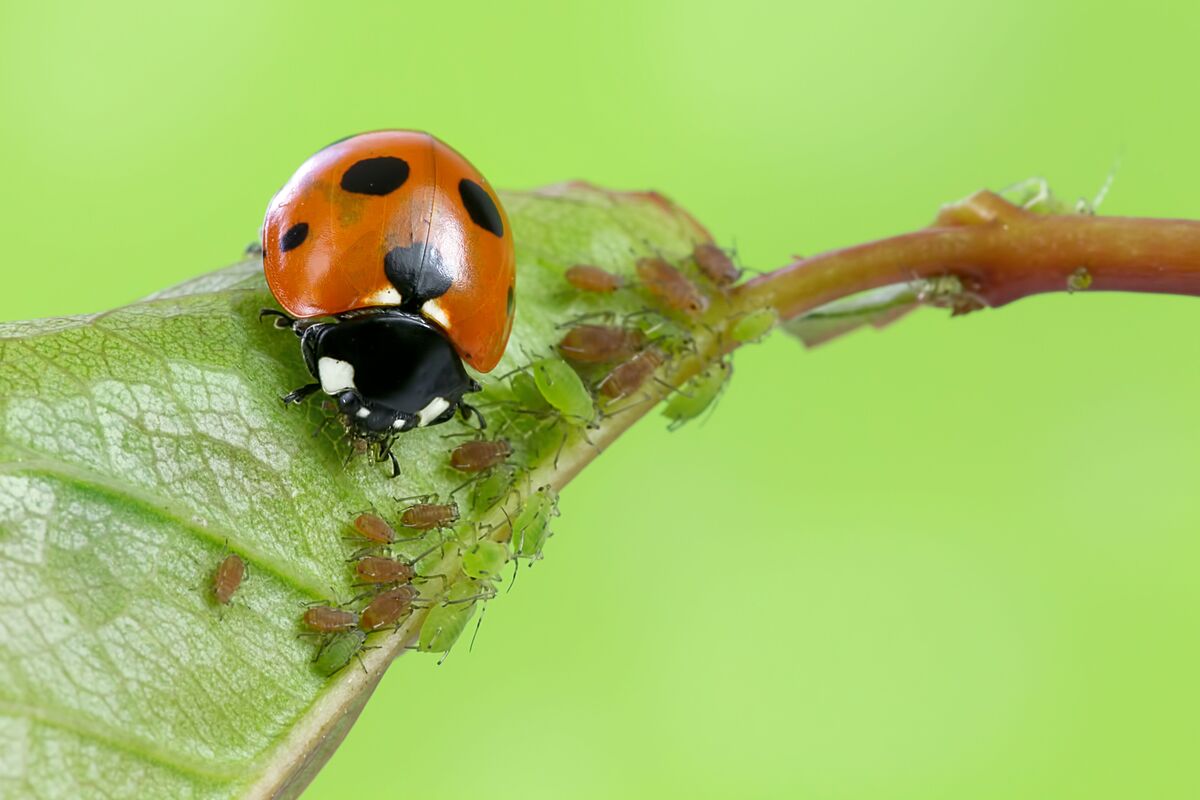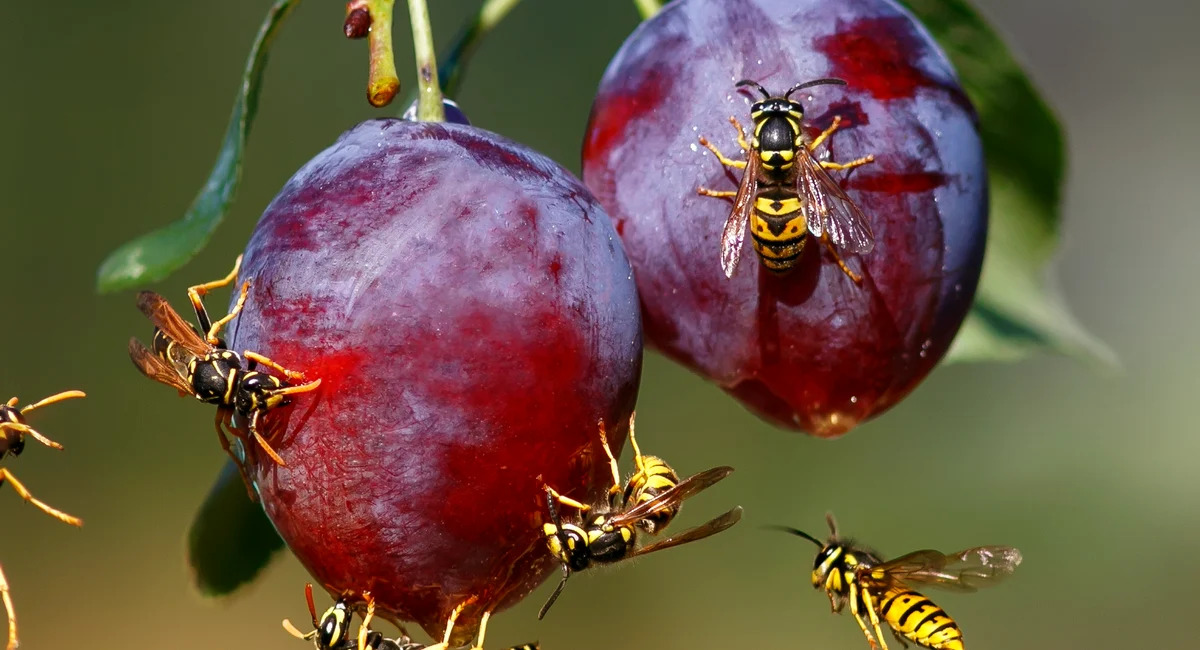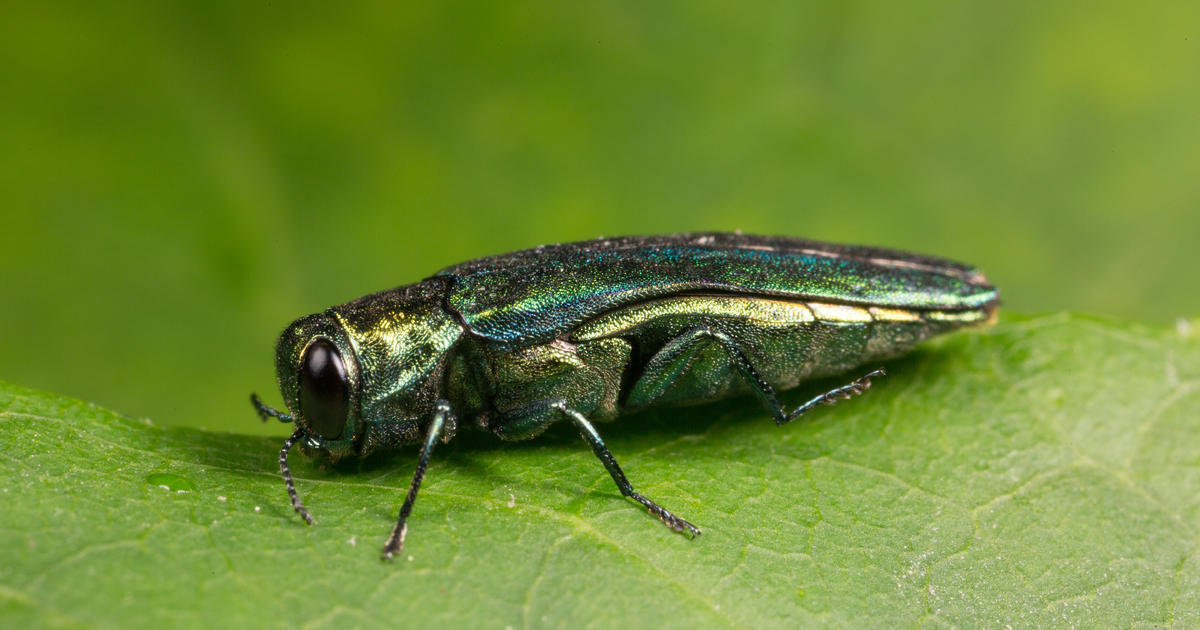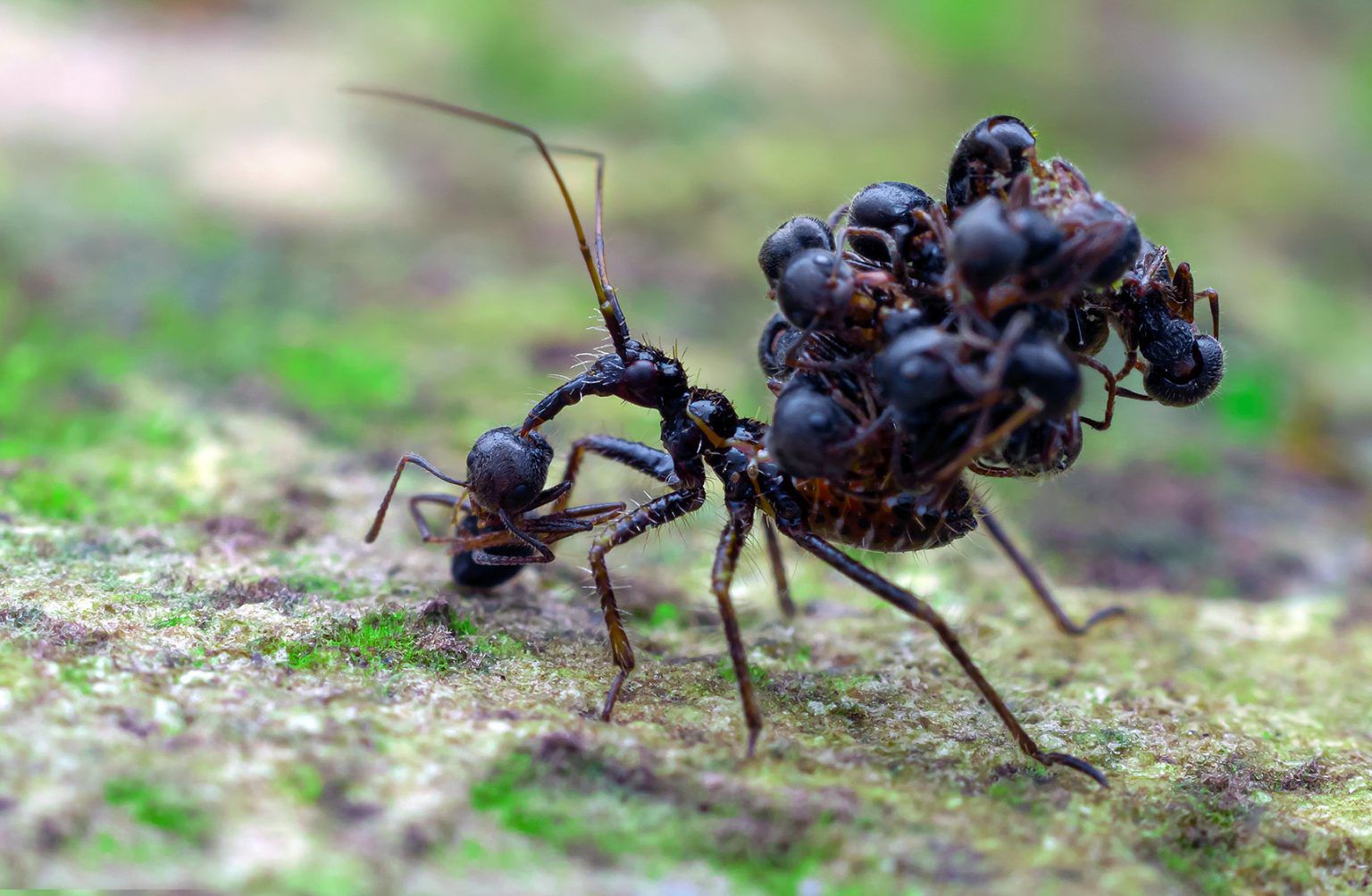Home>Gardening News and Trends>Latest News>What Insects Eat Tomato Plants


Latest News
What Insects Eat Tomato Plants
Modified: January 22, 2024
Stay updated with the latest news on what insects eat tomato plants. Learn how to protect your precious crop from common pests and ensure a bountiful harvest.
(Many of the links in this article redirect to a specific reviewed product. Your purchase of these products through affiliate links helps to generate commission for Chicagolandgardening.com, at no extra cost. Learn more)
Table of Contents
Introduction
Tomato plants are a beloved staple in many home gardens and are a versatile ingredient in countless delicious dishes. However, these vibrant plants are not immune to the voracious appetites of insect pests. Insects can cause significant damage to tomato plants, affecting both the leaves and the fruits. Understanding the common insect pests that prey on tomato plants is crucial for effective pest management.
Tomato plants, scientifically known as Solanum lycopersicum, belong to the Solanaceae family. These plants are native to South America and have been cultivated for centuries for their delicious and nutrient-packed fruits. They are rich in vitamins A and C, antioxidants, and lycopene, which has been linked to numerous health benefits.
As tomato plants grow and produce their juicy, red fruits, they become vulnerable to a wide range of insect pests. These pests feed on various parts of the plant, including the leaves, fruits, and stems. Some insects chew through the leaves, while others pierce the fruits, causing unsightly blemishes and compromising their quality.
The damage caused by insect pests can have a significant impact on tomato plant health and productivity. It can lead to stunted growth, reduced fruit production, and even disease transmission. To protect your tomato plants and ensure a bountiful harvest, it is essential to be familiar with the insect pests that commonly target them.
In this article, we will explore the various insect pests that feed on tomato plants and discuss effective management strategies. By understanding and implementing these strategies, you can minimize the damage caused by insect pests and maximize the health and productivity of your beloved tomato plants.
Importance of Tomato Plants
Tomato plants hold significant importance both as a staple food crop and as a beloved ingredient in countless culinary creations. They are not only delicious but also packed with essential nutrients that contribute to a healthy diet.
Tomatoes are a rich source of vitamins A and C, which are vital for maintaining a strong immune system, promoting healthy skin, and supporting good vision. Additionally, they contain significant amounts of antioxidants like lycopene, which has been linked to a reduced risk of certain cancers, cardiovascular disease, and age-related macular degeneration.
From a culinary perspective, tomatoes are incredibly versatile and can be used in a variety of dishes. They add vibrant color, sweet and tangy flavor, and a refreshing juiciness to salads, sandwiches, sauces, and soups. It’s no wonder that tomatoes are a key ingredient in many cuisines around the world!
Furthermore, tomato plants play a vital role in the home garden ecosystem. They attract beneficial pollinators such as bees and butterflies, ensuring the pollination of other plants nearby. This not only promotes plant diversity but also contributes to the overall health and productivity of the garden.
Tomatoes also have the potential to be a lucrative crop for commercial farmers. With the increasing demand for fresh and locally sourced produce, cultivating tomatoes can be a profitable venture. However, this potential can be hindered by the damaging effects of insect pests.
Protecting tomato plants from insect pests is crucial to maintain their health, productivity, and overall importance. By implementing effective pest management strategies, farmers and home gardeners can ensure a bountiful harvest and contribute to the availability of fresh, nutritious tomatoes.
In the following sections, we will explore the common insect pests that target tomato plants and discuss strategies for managing and controlling these pests. Understanding the importance of tomato plants and the threats they face will help you develop a proactive approach to safeguarding your plants and maximizing their value.
Common Insect Pests of Tomato Plants
Tomato plants are susceptible to attack by various insect pests that can cause significant damage if left unchecked. These pests can infest the leaves, fruits, and stems of the plants, hindering their growth and reducing their yield. Understanding the common insect pests of tomato plants is crucial for early detection and effective pest management.
One of the most common insect pests of tomato plants is the tomato hornworm (Manduca quinquemaculata). These voracious caterpillars can grow up to 4 inches long and have a green body with white diagonal stripes. They feed on the leaves and stems of tomato plants, consuming large amounts of foliage. If left untreated, hornworms can defoliate entire plants and severely impact fruit production.
The Colorado potato beetle (Leptinotarsa decemlineata) is another common pest that affects tomato plants. Adult beetles have a yellow-orange body with black stripes and can rapidly reproduce. They feed on the leaves of tomato plants, skeletonizing them and reducing the plant’s ability to produce energy through photosynthesis. The larvae of the Colorado potato beetle also feed on the leaves and can cause considerable damage if not controlled.
Aphids (Aphidoidea) are tiny, soft-bodied insects that often infest tomato plants. They can be green, yellow, or black and can reproduce quickly, leading to population explosions. Aphids feed on the sap of tomato plants, causing the leaves to curl and distort. They also excrete a sticky substance called honeydew, which attracts ants and can promote the growth of black sooty mold.
Whiteflies (Aleyrodidae) are small, winged insects that cluster on the undersides of tomato leaves. They suck the sap from the plants, weakening them and causing the leaves to turn yellow and eventually die. Whitefly infestations can lead to reduced plant vigor and lower fruit quality.
Other common insect pests of tomato plants include flea beetles, which create small holes in the leaves; thrips, which feed on developing fruits and cause silvering and deformities; and tomato fruitworms, which tunnel into the fruits and render them inedible.
Identifying these common insect pests and monitoring their populations is essential for effective pest management. Regular inspection of tomato plants for signs of damage and the presence of pests can help to detect infestations early. By implementing a combination of preventive and control measures, such as cultural practices, biological control methods, and targeted insecticide applications, you can effectively manage these insect pests and protect your tomato plants.
Insects That Feed on Tomato Leaves
Tomato plants are often targeted by a variety of insect pests that feed on their leaves, compromising the plant’s overall health and vitality. These pests can cause damage ranging from minor leaf discoloration to severe defoliation if not properly managed. Understanding the insects that commonly feed on tomato leaves is crucial for effective pest control.
One of the most notorious leaf-feeding insects is the tomato hornworm (Manduca quinquemaculata). These large caterpillars can grow up to 4 inches long and have a distinct green body with white diagonal stripes. They are voracious eaters and can quickly defoliate tomato plants if left uncontrolled. To identify hornworm infestations, look for droppings and removed foliage around the base of the plant, as well as the presence of the caterpillars themselves.
The Colorado potato beetle (Leptinotarsa decemlineata) also feeds on the leaves of tomato plants. Adult beetles have a yellow-orange body with black stripes and can lay clusters of bright yellow eggs on the undersides of leaves. The larvae of the Colorado potato beetle are voracious feeders and can rapidly defoliate tomato plants if not managed. Regularly inspect your tomato plants for the presence of both adult beetles and their eggs.
Aphids (Aphidoidea) are small, soft-bodied insects that often feed on the leaves of tomato plants. They can be green, yellow, or black and can reproduce quickly, forming large colonies. Aphids extract sap from the leaves, causing them to curl and distort. Look for clusters of aphids on the undersides of leaves and the presence of sticky honeydew, a sugary substance they excrete.
Additionally, whiteflies (Aleyrodidae) are common pests that feed on tomato leaves. These small, winged insects typically cluster on the undersides of leaves, sucking out the plant’s sap. Infested leaves may turn yellow, become stunted, or exhibit a silvered appearance. The presence of whiteflies can be detected by gently shaking the plant, causing them to take flight.
Flea beetles are another group of leaf-feeding insects that can affect tomato plants. These small, jumping beetles have a shiny, hard body and can create numerous small holes in the leaves. While the damage from flea beetles is generally not severe, large populations can cause significant defoliation and impact plant health.
By being aware of these common leaf-feeding insects and regularly inspecting your tomato plants, you can take proactive measures to prevent infestations and implement timely pest control strategies. Maintaining a healthy ecosystem in your garden, including attracting natural predators and practicing good garden hygiene, can also help keep these pests at bay.
Insects That Feed on Tomato Fruits
Tomato fruits are a delicious and sought-after treat, not only for us but also for various insect pests. These pests can cause significant damage by feeding on the fruits, leading to unsightly blemishes, reduced quality, and even render the fruits inedible. It is essential to be aware of the insects that commonly feed on tomato fruits to effectively manage and protect your harvest.
One insect pest that can wreak havoc on tomato fruits is the tomato fruitworm (Helicoverpa zea). These caterpillars are light green or brown with dark stripes and have a voracious appetite for ripe and developing fruits. Fruitworms bore into the fruits, causing extensive damage and providing entry points for pathogens, resulting in rot and spoilage.
The tomato pinworm (Keiferia lycopersicella) is another insect pest that targets tomato fruits. These small, whitish caterpillars tunnel into the fruits, leaving trails of frass (insect excrement) behind. The tunneling can cause the fruits to distort and become misshapen, making them unappealing and commercially unmarketable.
Another group of pests that can damage tomato fruits are stink bugs (Pentatomidae). These shield-shaped insects use their piercing mouthparts to puncture the skin of the fruits and extract the plant juices. Stink bug feeding can cause the fruits to develop characteristic sunken spots and dimples, making them aesthetically unappealing.
Fruit flies (Tephritidae) are also notorious for damaging tomato fruits. Female fruit flies lay their eggs just below the skin of the fruits. Once the eggs hatch, the larvae feed on the flesh of the fruits, causing them to rot and become mushy. Infested fruits can attract secondary infections, accelerating their decay.
In addition to these specific pest insects, a variety of other insects, such as caterpillars, beetles, and ants, may also feed on tomato fruits, although they are less common. Keeping a close eye on your tomato plants and regularly inspecting the fruits for signs of damage or infestation is essential for early detection.
To protect your tomato fruits from these pesky pests, consider implementing various management strategies. These may include using physical barriers like mesh netting to prevent insects from reaching the fruits, practicing good sanitation by removing infested fruits and plant debris, and using targeted insecticides when necessary. Additionally, attracting beneficial insects such as parasitic wasps and encouraging biodiversity in your garden can help control pest populations naturally.
By understanding the insects that commonly feed on tomato fruits and taking proactive measures, you can ensure a bountiful harvest of healthy and visually appealing tomatoes.
Insects That Feed on Tomato Stems
While tomato leaves and fruits are often the primary targets of insect pests, the stems of tomato plants are not immune to infestation. Insects that feed on tomato stems can cause significant damage, affecting the overall structure and health of the plants. It is crucial to be aware of the common stem-feeding insects to effectively manage and protect your tomato plants.
One of the major stem-feeding insects that affects tomato plants is the cutworm (Noctuidae family). These caterpillars hide in the soil during the day and emerge at night to feed on the stems near the soil surface. Cutworms can sever young tomato plant stems at ground level, causing the plants to wilt and potentially die. They can be especially destructive to recently transplanted seedlings.
Borers, such as the tomato stem borer (Scrobipalpa heliopa), also pose a significant threat to the stems of tomato plants. The adult moths lay their eggs near the base of the stem, and the larvae bore into the stem, tunneling and feeding as they grow. This feeding activity weakens the stem and disrupts the flow of water and nutrients, leading to wilting and stunted growth.
Another common stem-feeding pest is the spider mite (Tetranychus urticae). These tiny pests can infest tomato stems, sucking out the sap and causing yellowing, wilting, and stunting of the plants. As spider mite populations increase, fine webbing may become visible on the stems and leaves. Their feeding activity can weaken the stems and make the plants more susceptible to other stressors and diseases.
Some species of aphids, such as the potato aphid (Macrosiphum euphorbiae), also have a preference for feeding on tomato stems. These small, soft-bodied insects extract sap from the stems, causing them to become distorted, stunted, and weakened. Like other aphids, they can reproduce rapidly and form large colonies if left unchecked.
In addition to these pests, caterpillars and other chewing insects, such as beetles, may occasionally feed on tomato stems. While their impact may not be as severe as that of the aforementioned pests, large populations can still cause damage and hinder the overall health of the plants.
To protect tomato stems from these pests, implement preventative measures such as using physical barriers like collars around the base of the plants to prevent cutworms from accessing them. Regularly inspect your plants for signs of infestation, such as wilting or stem damage, and take prompt action if needed. Pruning off heavily infested stems or using targeted insecticides can help to control stem-feeding insect populations.
By staying vigilant and utilizing appropriate pest management strategies, you can safeguard the stems of your tomato plants and support their healthy growth and development.
Management Strategies for Insect Control on Tomato Plants
Effectively controlling insect pests on tomato plants is crucial to ensure healthy growth and maximize yields. By employing various management strategies, both preventive and curative, you can minimize pest infestations and protect your tomato plants. Here are some effective strategies for insect control on tomato plants:
1. Cultural Practices: Implementing good cultural practices can significantly reduce the risk of insect infestations. Practices such as crop rotation, proper spacing between plants, and regular removal of plant debris can help disrupt pest lifecycles and minimize their populations. Additionally, ensuring optimal soil fertility and moisture levels can promote plant vigor and resilience against pests.
2. Biological Control: Encouraging natural predation and parasitism of insect pests can be an effective eco-friendly approach to manage their populations. Introduce beneficial insects like ladybugs, lacewings, and parasitic wasps, which are natural predators of many common pests like aphids and caterpillars. These beneficial insects can help keep pest populations in check without the need for chemical insecticides.
3. Protective Barriers: Physical barriers, such as mesh netting or row covers, can create a barrier between the insects and your tomato plants. These barriers can prevent insects from accessing the plants and laying eggs. However, ensure adequate airflow and pollination by removing the barriers during flowering and fruiting stages or using porous materials.
4. Companion Planting: Planting certain companion plants alongside tomatoes can help repel or deter insect pests. For example, marigolds emit a strong scent that repels aphids and nematodes, while basil can deter tomato hornworms. Research companion planting options to find suitable plants that complement tomato growth and deter specific pest insects.
5. Chemical Control: In severe cases or when other strategies are not sufficient, chemical insecticides can be used as a last resort. Choose insecticides that are formulated specifically for tomato plants and the targeted pest insects, and follow label instructions carefully. Consider using organic or botanical insecticides, which are generally safer for the environment and human health.
6. Timely Pest Detection: Regularly inspect your tomato plants for signs of insect infestation, such as chewed leaves, tunneling, wilting, or the presence of pests themselves. Early detection allows for prompt action, preventing pest populations from escalating and causing extensive damage.
7. Integrated Pest Management: Implementing an integrated pest management (IPM) approach combines multiple strategies to effectively control pests while minimizing environmental impact. IPM focuses on prevention, monitoring, and using a combination of cultural, biological, and chemical control methods as needed.
Remember, maintaining overall plant health and providing a conducive growing environment is crucial for preventing and managing insect pests. By combining these management strategies and tailoring them to your specific situation, you can effectively control insect pests on your tomato plants and ensure a healthy and bountiful harvest.
Natural Predators of Insect Pests on Tomato Plants
One of the most effective and sustainable ways to control insect pests on tomato plants is by harnessing the power of natural predators. These beneficial organisms play a crucial role in maintaining the balance of pest populations, reducing the need for chemical interventions. By attracting and promoting natural predators in your garden, you can help keep insect pests in check and protect your tomato plants. Here are some common natural predators of insect pests on tomato plants:
1. Ladybugs (Coccinellidae): Ladybugs are famous for their voracious appetite for aphids, one of the most common pests of tomato plants. These small, colorful beetles can consume large numbers of aphids, helping to control their population. Encourage ladybugs in your garden by planting flowering plants and avoiding the use of broad-spectrum insecticides that may harm them.
2. Lacewings (Chrysopidae): Lacewings are delicate insects with lacy wings and prominent golden or green eyes. Both adults and larvae are effective predators, feeding on a wide variety of pests, including aphids, caterpillars, and mites. Attract lacewings to your garden by planting pollen and nectar-rich flowers and avoiding the use of chemical pesticides.
3. Parasitic Wasps (Braconidae, Chalcididae): Parasitic wasps are tiny, non-stinging wasps that lay their eggs inside or on the bodies of pests. The wasp larvae then develop by consuming the pest from the inside. These natural enemies target various pests, including tomato hornworms, caterpillars, and aphids. Provide appropriate habitat for parasitic wasps, such as flowering plants and undisturbed areas for overwintering.
4. Praying Mantises (Mantidae): Praying mantises are large insects with formidable front legs used for catching prey. While they are not specific to tomato pests, they are generalist predators and will readily consume a variety of insect pests. Having a few mantises in your garden can help control pests naturally. However, be cautious when using mantis egg cases for release, as they may also consume beneficial insects.
5. Birds: Many bird species, such as sparrows, finches, and robins, feed on insects and can be helpful in controlling pest populations. Provide bird-friendly habitat by planting trees and shrubs and offering bird feeders and baths. Encouraging birds to visit your garden can help naturally reduce pest pressure on your tomato plants.
6. Predatory Insects: Various predatory insects, such as assassin bugs, pirate bugs, and ground beetles, prey on a wide range of pest insects. These insects are natural hunters and can help keep pest populations in check. Creating habitat diversity, including providing organic matter and appropriate shelter, can attract and support populations of these beneficial predators.
7. Frogs and Toads: Amphibians like frogs and toads are natural insect hunters that can contribute to pest control in your garden. They feed on a variety of insects, including beetles, worms, and slugs. Encourage their presence by providing water sources like small ponds or shallow dishes, as well as hiding spots like logs or vegetation.
By creating a garden ecosystem that supports and attracts these natural predators, you can enhance biological control and reduce the need for chemical insecticides. Incorporate diverse flowering plants, provide suitable habitats, and avoid practices that harm beneficial insects to encourage the natural balance of predator-prey interactions on your tomato plants.
Conclusion
Tomato plants are highly valued for their delicious fruits and versatility in the kitchen. However, these plants are not immune to the threat of insect pests that can damage their leaves, fruits, and stems. It is essential to understand the common insect pests and their feeding habits to effectively manage and protect tomato plants.
By being aware of the insects that feed on tomato plants, such as the tomato hornworm, Colorado potato beetle, aphids, whiteflies, and many others, you can take proactive measures to detect and control infestations before they cause significant damage. Implementing cultural practices, promoting natural predators, using physical barriers, and applying targeted insecticides when necessary are all effective management strategies for pest control.
Furthermore, recognizing the importance of tomato plants in our diets and their role in home gardens and commercial agriculture is crucial. Tomatoes provide essential nutrients, contribute to vibrant culinary creations, and attract beneficial pollinators, supporting overall garden health.
Lastly, employing natural predators to control insect pests is a sustainable and eco-friendly approach. Beneficial insects such as ladybugs, lacewings, and parasitic wasps play a vital role in reducing pest populations naturally, reducing the need for chemical treatments and preserving the delicate balance of the garden ecosystem.
By combining these strategies and staying vigilant in monitoring your tomato plants for signs of infestations, you can protect your plants, maximize yield, and savor the delicious fruits of your labor. Remember, a healthy and thriving tomato plant starts with proactive pest management and a deep understanding of the insects that pose a threat.










